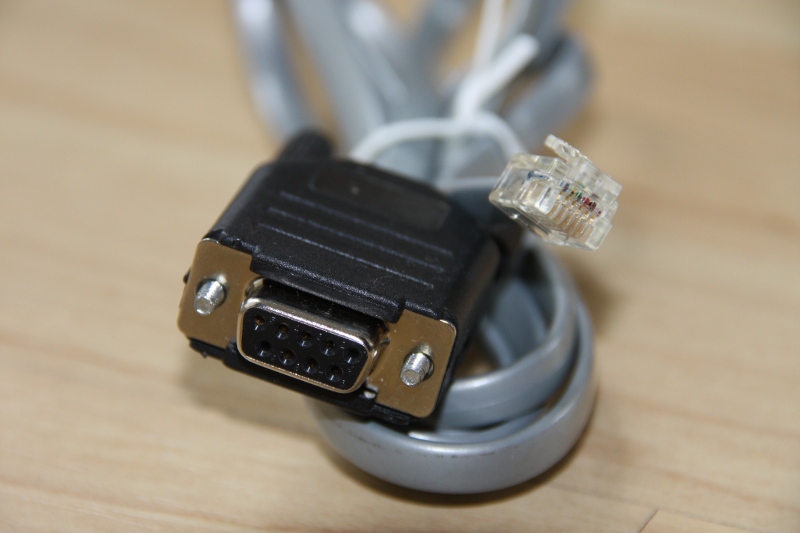
For debug use cases I needed console access to my Cisco VoIP phone. The configured SSH access via config file did not work for some unknown reason. The phones do have a dedicated port that is named as RS232 or AUX. These ports allow console access to the phone similar to the console ports on routers or switches.
The only difference is that a normal Cisco console cable cannot be used because the connectors on the phones use a modular connector with 6 Pins (RJ25, 6P6C). In Germany these connectors are often used on cables to connect traditional phones to the wall outlet. This gave the ideal prototype for building a console cable for the VoIP phones.
I gathered an old unused telephone cable and cut off the connector for the wall outlet. So I got a piece of cable with a modular RJ25 connector on the one end. As far as I know the Cisco cables use a RJ45 Connector on the other end and are connected to the computer using a DB9 to RJ45 Adapter. I do not see a use case for this adapter. So I soldered a DB9 Connector to the other end.
On the DB9 connector the pins are usually numbered. The pins on the modular connector are counted from right to left if you look onto the contacts side of the connector and the cable pointing away from you. The pinout of the connectors of my cable use the following connections:
RJ25 DB9
1 1
2 --------------------------- 2
3 ---------+ +--------- 3
4 ---------|-------+ 4
5 +----------------- 5
6 6The parameters for the serial connection are: speed 115,200 baud, 8 data bits, no parity and 1 stop bit. Using a terminal program and the described cable gives you an excellent way to debug the phone if you experience problems. You can see all the warnings about errors in the downloaded configuration files.